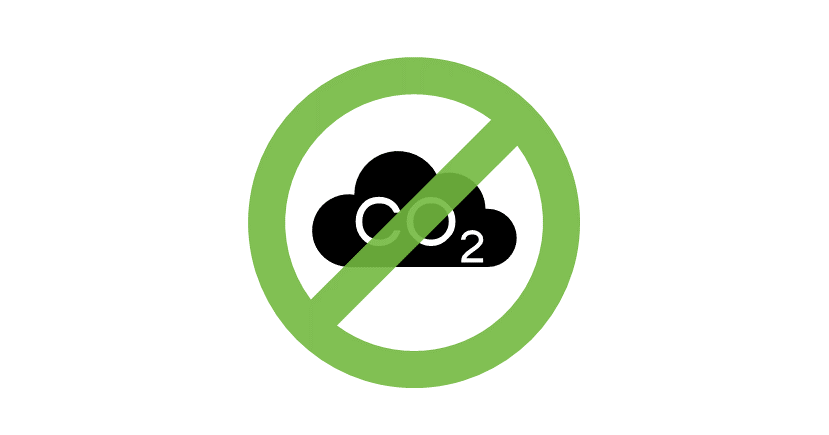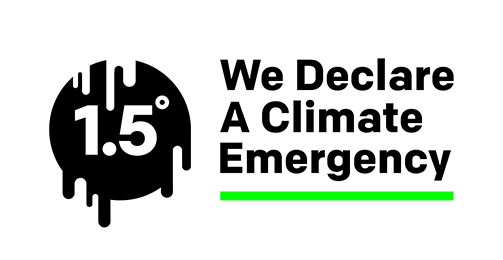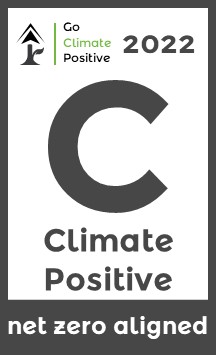Send a message 0333 344 5890 |
- Home
- Knowledge
- Learning Hub
- What is the difference between carbon neutral and net zero?
What is the difference between carbon neutral and net zero?
Note: We have recently changed our position on Carbon Neutrality vs Net Zero. Please read the article From Carbon Neutral to Net Zero" for details (March 2024).
|
There is so much confusion around the jargon associated with tackling climate change. One of the most common mix-ups I see, and often get asked about, is "what is the difference between Net Zero and Carbon Neutral". It is common to see these terms used interchangeably, sometimes even within the same document, but they are not identical and this confusion can lead to misleading claims (whether deliberate or inadvertent) and if not sorted out quickly could prevent us from achieving net zero at all through complacency or ignorance. In this article I want to clearly show the difference and highlight some of the mistakes that businesses are making in the hope that this will help create clearer, more meaningful net zero target setting. |
Net Zero
Let's start with defining Net Zero. In essence this simply means balancing (or "offsetting") the greenhouse gas emissions you are making by removing an equivalent amount of carbon dioxide from the atmosphere. Sounds straightforward, but there are a couple of hidden traps here:
We don't have the carbon removal technology or the space for tree planting to be able to balance our current level of emissions, not by a long way! So, a meaningful net zero target must include deep emission reductions. What do I mean by "deep"? In principle this means reducing everything that can possibly be reduced but in practice there are 2 models in common use, "Science-based targets" and the "Carbon Law". Whilst there are differences in detail between the two, in broad terms they both say that we need to reduce 50% of our emissions by 2030 and around 80-90% by 2050, so that we are left with around 10-20% of emissions to offset by carbon removals.
When it comes to balancing there are broadly two classes of offset. The one most commonly used involves investing in projects that reduce or eliminate someone else's emissions (such as supplying fuel-efficient cook stoves). These "carbon reduction offsets" (also known as "avoided emissions" offsets) can be useful right now to speed up the overall rate of carbon reduction but will be less useful in the future when we have eliminated most of the emissions that we can. Then, we will need to use the 2nd class of offsets "carbon removals" which involve investing in projects that remove carbon dioxide from the atmosphere and lock it away permanently (or at least for a long time). The most familiar example of these is planting trees, which is undoubtedly a good thing to do, when done sympathetically with the local ecology, but which has its own trap. Tree planting will only work as an offset once we have re-planted all the trees we have deforested over the last 200 years.
So, a meaningful Net Zero pathway involves FIRST making deep emissions reductions and THEN balancing what is left by removing carbon from the atmosphere (see illustration below).
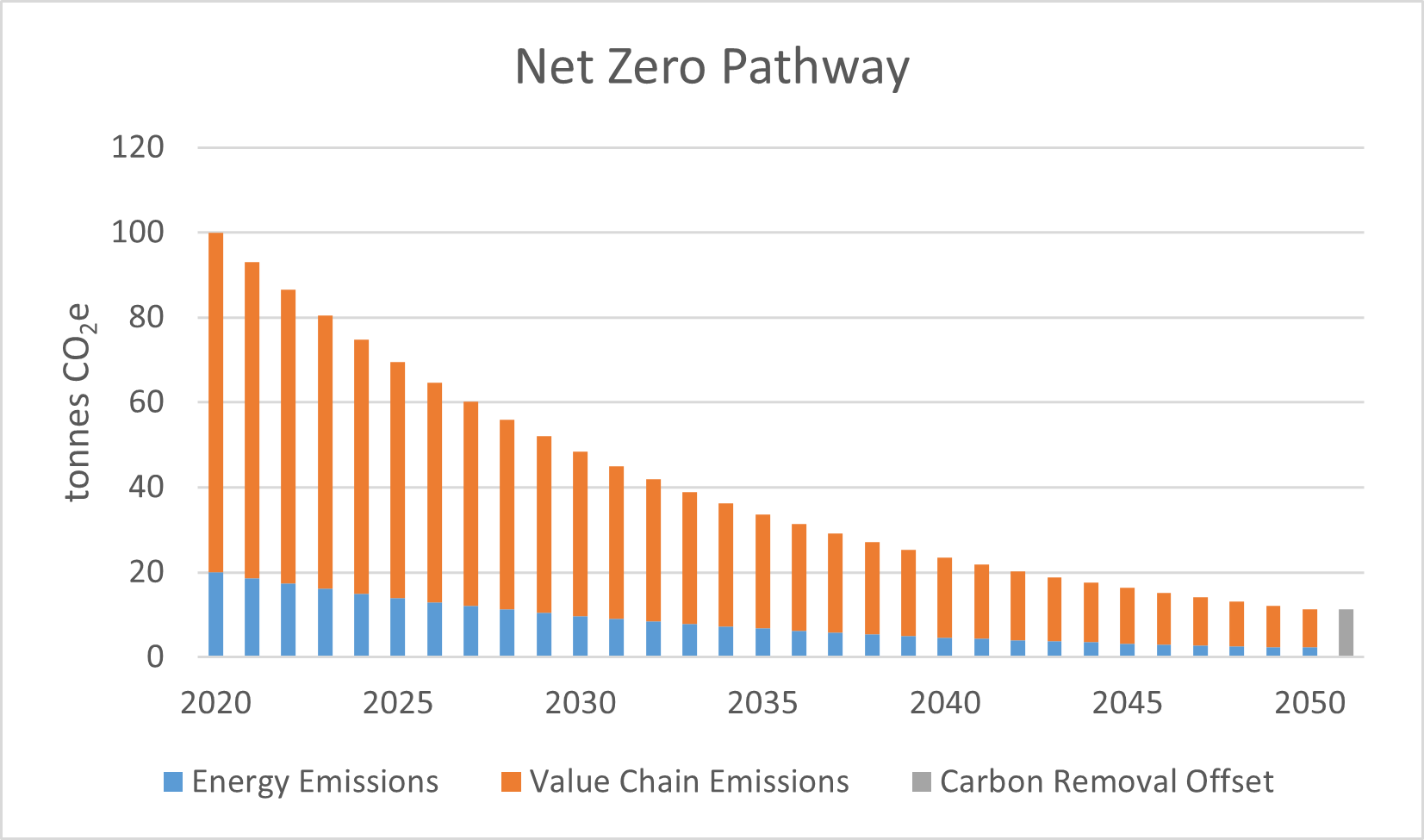
Carbon Neutral
Now let's talk about Carbon Neutrality. Again, this involves balancing our emissions with offsets, but the key difference is that the balancing is done NOW, not waiting until we have made deep emission reductions. This is a good thing to do when high quality offsets are used and when it is done to supplement a science-based carbon reduction programme. The practice of reducing emissions year on year, and offsetting what we have not yet been able to reduce is a good strategy that will help to deliver (and maybe even speed up) a net zero future.
This strategy, sometimes known as "Carbon Neutral Now", is illustrated below (I've only shown the first 10 years to make the chart easier to read).
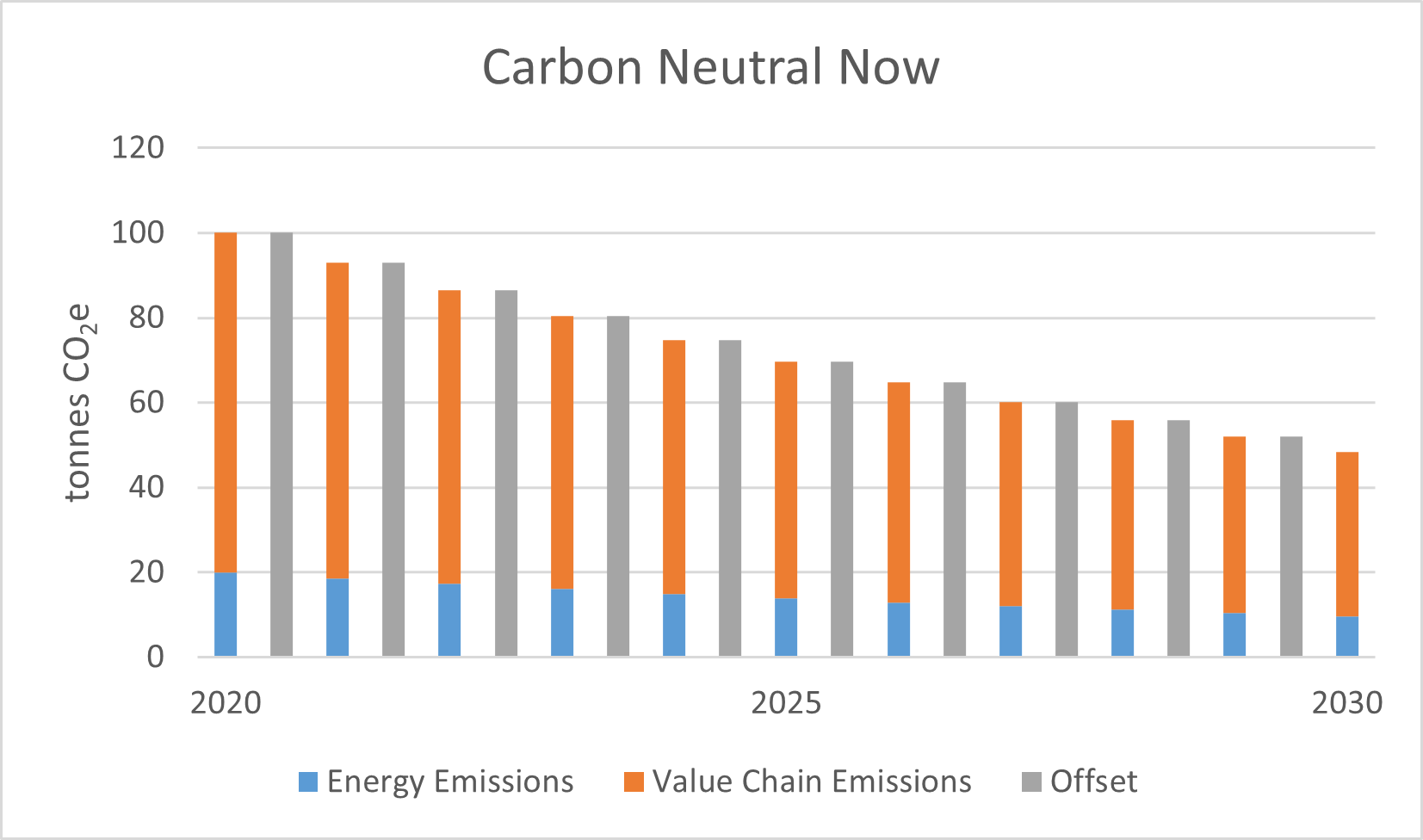
So, does this mean that all carbon neutral commitments are equal? Unfortunately, there are a couple of traps that organisations often fall into here too.
Carbon Neutral without reductions
The first of these is to offset emissions to claim carbon neutrality without first committing to a science-based reduction programme. Sadly, there are numerous offsetting programmes available to organisations that purport to be an easy route to balancing their emissions. However, if these are not accompanied by carbon reduction there is the danger that they can lead, at best, to complacency or, at worst, provide cover for continuing to increase emissions. The chart below illustrates this.
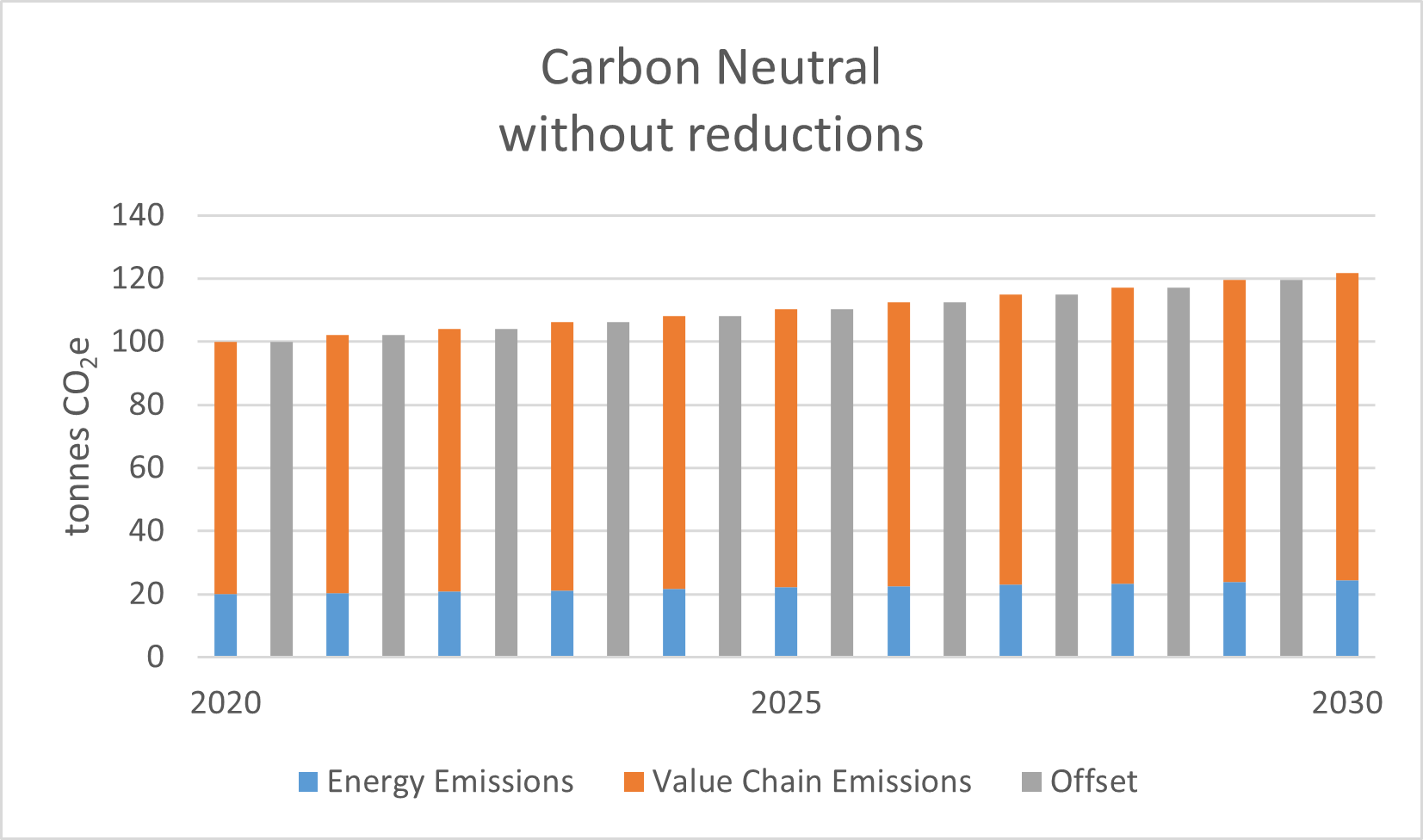
Partial Carbon Neutrality
The second trap arises from the fact that the Greenhouse Gas Protocol (the standard for calculating emissions) allows significant freedom for an organisation to decide which emissions to include or exclude, as long as it states what has not been included and why. In practice this often leads to large portions of their carbon footprint to be excluded as being "too hard to calculate".
One of the most common examples is when an organisation only reports emissions from their energy use (known as "Scope 1 and 2" in the jargon), ignoring the often much larger emissions in their value chain (known as "Scope 3"). This has led to a proliferation of commitments to be carbon neutral, or even net zero, for scope 1 and 2 emissions only. This sounds good, and it can be a useful stepping-stone to achieving carbon neutrality for all emissions (you might like to read the NHS report "Delivering a ‘Net Zero’ National Health Service" for a good example of this). However, very often it is presented as the end point of the organisation's climate strategy. When this happens, most organisations will significantly under call the amount of offsetting required and will not deliver a meaningful net zero commitment (see illustration below).
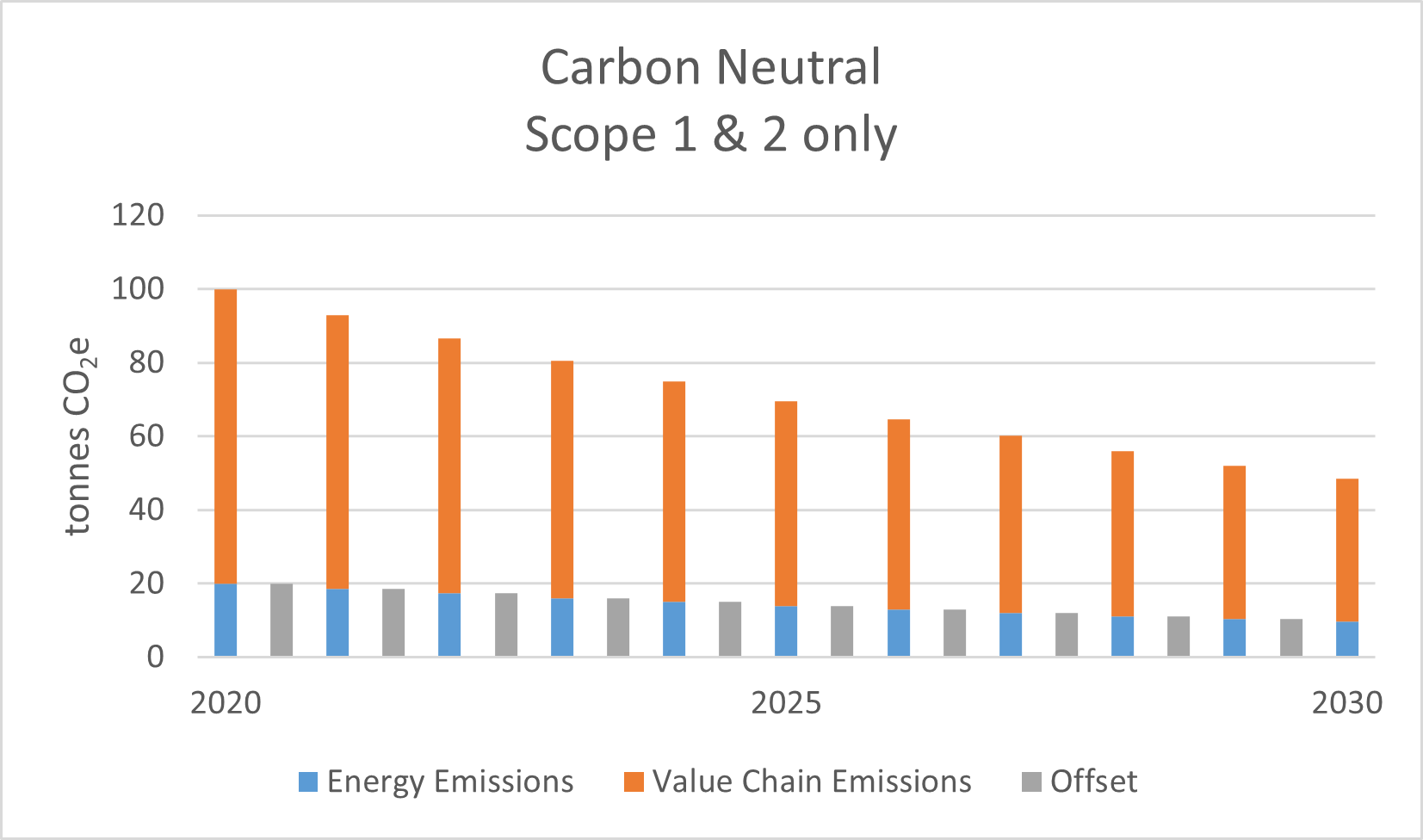 Summary of Net Zero vs Carbon Neutral
Summary of Net Zero vs Carbon Neutral
The key differences between Net Zero and Carbon Neutral are summarised below:
Net Zero | Carbon Neutral | |
| What is included | All emissions from energy use and the value chain must be included | Organisations can state which emissions they have chosen to include |
| Requirement for emissions reductions | Deep reductions (approx. 80-90%) in the organisation's emissions must be made | No requirement to make significant reductions |
| Timing of offsetting | Offsetting is done AFTER deep reductions in emissions | Offsetting is done NOW |
| Type of offsetting | Offsetting must remove carbon from the atmosphere | Offsetting can be from any combination of carbon removals and carbon savings |
I have not written this article to "call out" or "name and shame" but to offer useful guidance to organisations wanting to make genuine and meaningful net zero or carbon neutral commitments. I believe that most of these commitments are made in good faith, but that organisations often fall into one of the traps I have illustrated here through understandable confusion.
I hope this article helps to clarify things. If this has inspired you to consider committing your business to Net Zero or Carbon Neutrality then please contact us using the button below to find out how we can help you.
Written by Eoin McQuone

Eoin (pronounced like "Ian") is the Chief Carbon Coach and founder of Go Climate Positive. He is a Practitioner member of IEMA (the Institute of Environmental Management) and a sustainability lead on the Cheltenham Economic Recovery Task Force.
Eoin says, "Sustainability is no longer a 'nice to do', it is business critical. My goal is to make it accessible and affordable for every business, however big or small , no matter their market sector."

